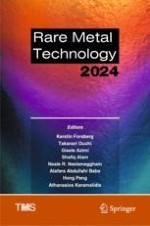2024 | OriginalPaper | Chapter
Concentrated-Solar-Thermal-Driven Recycling of Li-Ion Battery Waste Through Carbothermic Reduction: Thermodynamic Assessment and Experimental Verification
Authors : Bintang A. Nuraeni, Deddy C. Nababan, A. D. P. Putera, M. Akbar Rhamdhani
Published in: Rare Metal Technology 2024
Publisher: Springer Nature Switzerland
Activate our intelligent search to find suitable subject content or patents.
Select sections of text to find matching patents with Artificial Intelligence. powered by
Select sections of text to find additional relevant content using AI-assisted search. powered by
